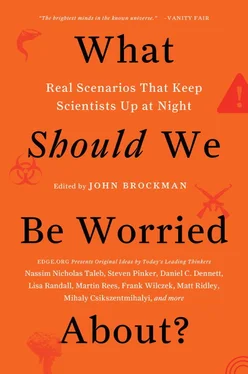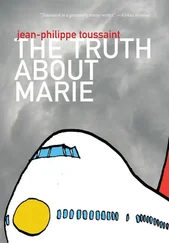Perhaps we resist these questions because they conjure images of male Greek philosophers drinking watered-down wine at symposia. Can their answers offer us anything useful today? Or perhaps we think we already know the answer. And indeed we do have an easy, plausible, and powerful answer that was not available to the Greeks: Modern technologies let us imagine a world of ever increasing material abundance for everyone. Standard indices of material wealth such as GDP or GNP suggest that we live much better than the Greeks. Between 1500 and 2000 (according to the widely used estimates of the late British economist Angus Maddison), global GDP multiplied almost 150 times and per capita GDP about 10 times. This is what we call “growth.” And most of us, most of the time, are happy to take “growth” as a surrogate for “the good life,” which is why most politicians, economists, and entrepreneurs spend most of their time working to sustain growth.
The story of growth dominates thinking about the good life partly because, as the Chinese say of Mao Zedong, it is 70 percent (well, perhaps 50 percent) true. To enjoy a good life, we need food, security, and protection from the elements, and we must use energy and resources to provide these goods. Attempts by psychologists to measure subjective well-being support the obvious conclusion that raising consumption levels above the poverty line is fundamental to our sense of well-being and contentment. A basic minimum of material consumption is the indispensable foundation for a good life.
Yet the story of “growth” is also at least 50 percent wrong. It is wrong in two important ways: It offers an impoverished understanding of the good life and it is steering us toward ecological chaos.
We all know that beyond a certain level (and that level may not be very high), well-being depends less and less on material consumption. If you’ve just had a great meal, you won’t increase your well-being by immediately eating five more; restraint is a source of well-being as well as consumption. Indeed, many components of the good life do not require more consumption, because they are renewable resources. They include friendship, empathy, kindness and generosity, good conversation, a sense of beauty, a sense of physical well-being and security, a sense of contentment, a sense of intimacy, a sense of humor, and ( Edge’ s forte) a delight in good ideas. Measures of increasing consumption cannot capture these psychic goods. In March 1968, not long before he was assassinated, Robert Kennedy said in a speech at the University of Kansas:
Our gross national product… counts air pollution and cigarette advertising, and ambulances to clear our highways of carnage…. It counts the destruction of our redwoods and the loss of our natural wonder in chaotic sprawl…. Yet the gross national product does not allow for the health of our children, the quality of their education, or the joy of their play. It does not include the beauty of our poetry or… the intelligence of our public debate or the integrity of our public officials…. [I]t measures everything, in short, except that which makes life worthwhile.
Even worse, the story of growth steers us toward ecological chaos. The biosphere is rich in resources and extraordinarily resilient, but there are limits. And what “growth” really means is ever increasing consumption of the energy and resources of the biosphere by one species, our own. Today we are learning that “growth” is pushing the biosphere to its limits. There is a real danger that biospheric systems will start breaking down, perhaps violently and fast, because we are messing with ancient, complex, unpredictable, and global metabolic pathways, such as the carbon and nitrogen cycles. If the resources of the biosphere are limited, then “growth” cannot continue indefinitely. So we have to start imagining what a good life will look like in a world of limited resources.
A basic level of material abundance is indeed the foundation. A good society will be one in which everyone enjoys the material foundations for a good life. But beyond that level, we will need to distinguish more clearly between the renewable and the nonrenewable components of a good life. Can we learn better how to appreciate and enjoy the renewable resources of a good life?
Developing a more realistic story about the good life will be an essential step toward a better life and a more sustainable society. These conversations will be complex and difficult. They will engage educators, scientists, economists, politicians, artists, entrepreneurs, and citizens as well as philosophers. But we desperately need the debate as we try to imagine a better future for our children and their children.
SATYAJIT DAS
Expert, financial derivatives & risk; author, Extreme Money: The Masters of the Universe and the Cult of Risk
Arthur Miller wrote that “an era can be said to end when its basic illusions are exhausted. ” Economic growth, the central illusion of the age of capital, may be ending.
Growth underpins every aspect of modern society. Economic growth has become the universal solution for all political, social, and economic problems, from improving living standards and reducing poverty to, now, solving the problems of overindebted individuals, businesses, and nations.
All brands of politics and economics are deeply rooted in the idea of robust economic growth, combined with the belief that governments and central bankers can exert substantial control over the economy to bring this about. In his 1925 novel The Great Gatsby , F. Scott Fitzgerald identified this fatal attraction: “Gatsby believed in the green light, the orgiastic future that year by year recedes before us. It eluded us then, but that’s no matter—tomorrow we will run faster, stretch out our arms farther . ”
In reality, economic growth is a relatively recent phenomenon. It took approximately five centuries (from 1300 to 1800) for the standard of living, measured in terms of income per capita, to double. Between 1800 and 1900, it doubled again. The 20th century saw rapid improvements in living standards, which increased between five and six times. Living standards doubled between 1929 and 1957 (twenty-eight years) and again between 1957 and 1988 (thirty-one years). Between 1500 and 1820, economic production increased by less than 2 percent per century. Between 1820 and 1900, economic production roughly doubled. Between 1901 and 2000, economic production increased by a factor of something like four times.
Over the last thirty years, a significant proportion of economic growth and the wealth created relied on financialization. As traditional drivers of economic growth such as population increases, new markets, innovation, and increases in productivity waned, debt-driven consumption became the tool of generating economic growth. But this process requires ever increasing levels of debt. By 2008, $4 to $5 of debt was required to create $1 of growth. China now needs $6 to $8 of credit to generate $1 of growth, an increase from around $1 to $2 of credit for every $1 of growth a decade ago. Debt allows society to borrow from the future. It accelerates consumption, as debt is used to purchase something today against the promise of paying back the borrowing in the future. Growth is artificially increased by spending that would have taken place normally over a period of years being accelerated because of the availability of cheap money. With borrowing levels now unsustainable, debt-engineered growth may be at an end.
Growth was also based on policies that led to the unsustainable degradation of the environment. It was based upon the uneconomic, profligate use of mispriced nonrenewable natural resources, such as oil and water.
Читать дальше












